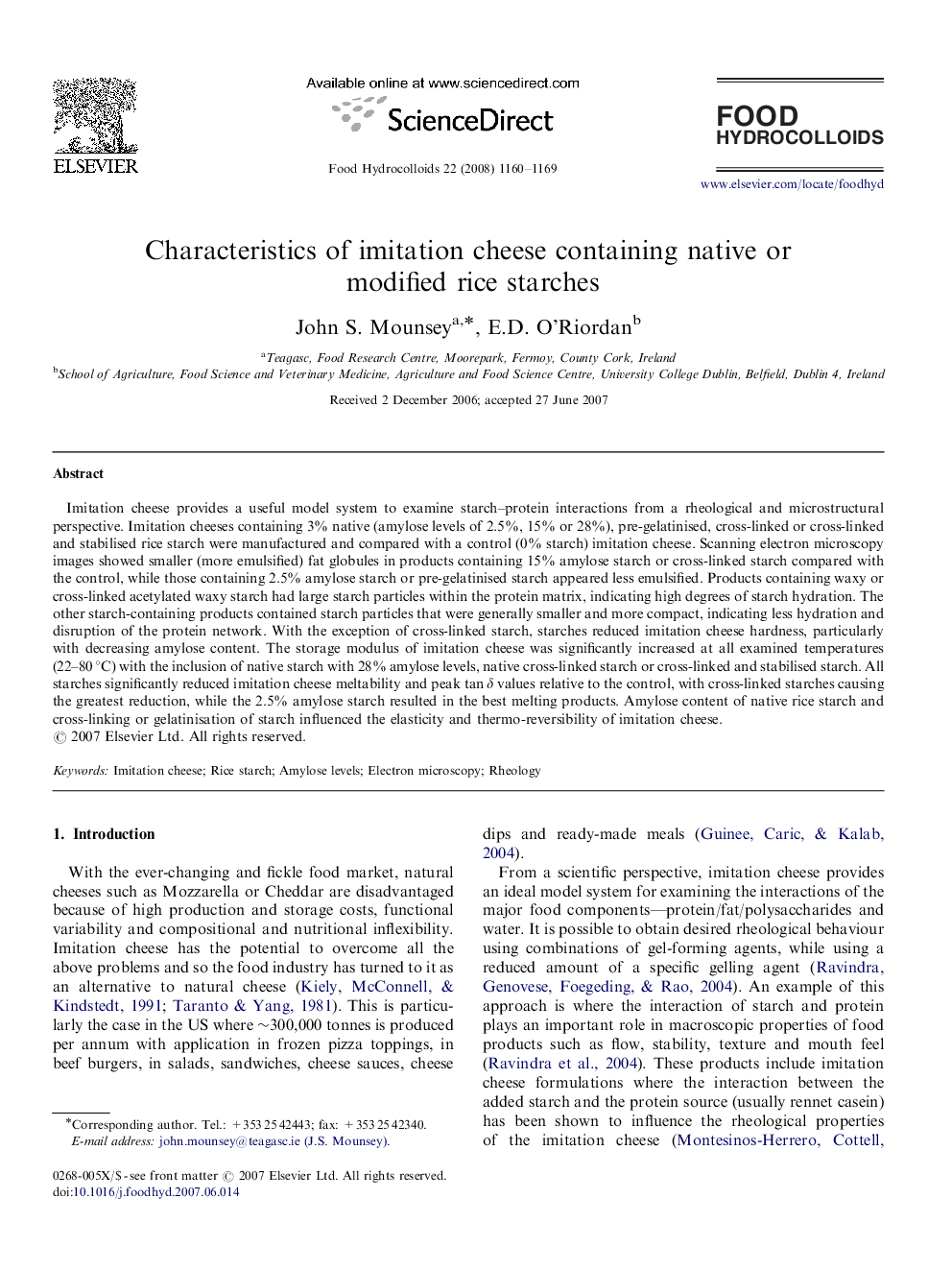| Article ID | Journal | Published Year | Pages | File Type |
|---|---|---|---|---|
| 605281 | Food Hydrocolloids | 2008 | 10 Pages |
Imitation cheese provides a useful model system to examine starch–protein interactions from a rheological and microstructural perspective. Imitation cheeses containing 3% native (amylose levels of 2.5%, 15% or 28%), pre-gelatinised, cross-linked or cross-linked and stabilised rice starch were manufactured and compared with a control (0% starch) imitation cheese. Scanning electron microscopy images showed smaller (more emulsified) fat globules in products containing 15% amylose starch or cross-linked starch compared with the control, while those containing 2.5% amylose starch or pre-gelatinised starch appeared less emulsified. Products containing waxy or cross-linked acetylated waxy starch had large starch particles within the protein matrix, indicating high degrees of starch hydration. The other starch-containing products contained starch particles that were generally smaller and more compact, indicating less hydration and disruption of the protein network. With the exception of cross-linked starch, starches reduced imitation cheese hardness, particularly with decreasing amylose content. The storage modulus of imitation cheese was significantly increased at all examined temperatures (22–80 °C) with the inclusion of native starch with 28% amylose levels, native cross-linked starch or cross-linked and stabilised starch. All starches significantly reduced imitation cheese meltability and peak tan δ values relative to the control, with cross-linked starches causing the greatest reduction, while the 2.5% amylose starch resulted in the best melting products. Amylose content of native rice starch and cross-linking or gelatinisation of starch influenced the elasticity and thermo-reversibility of imitation cheese.
